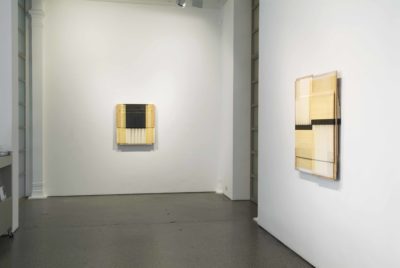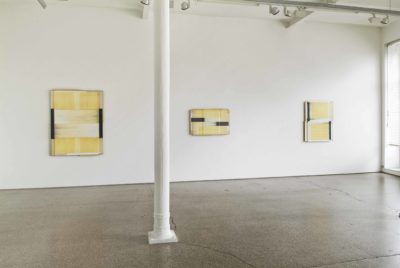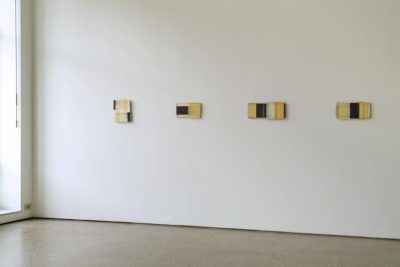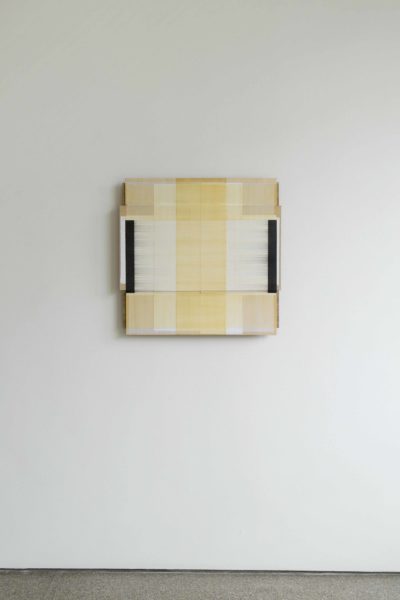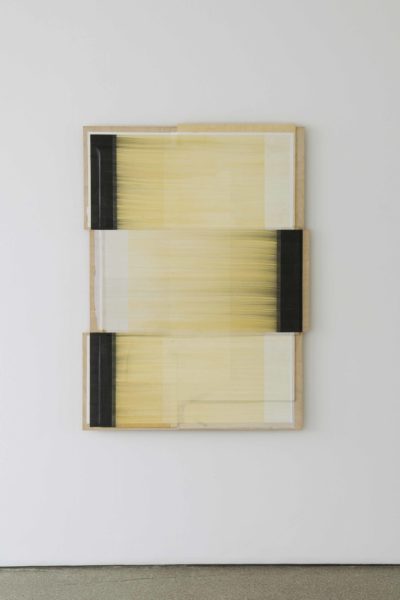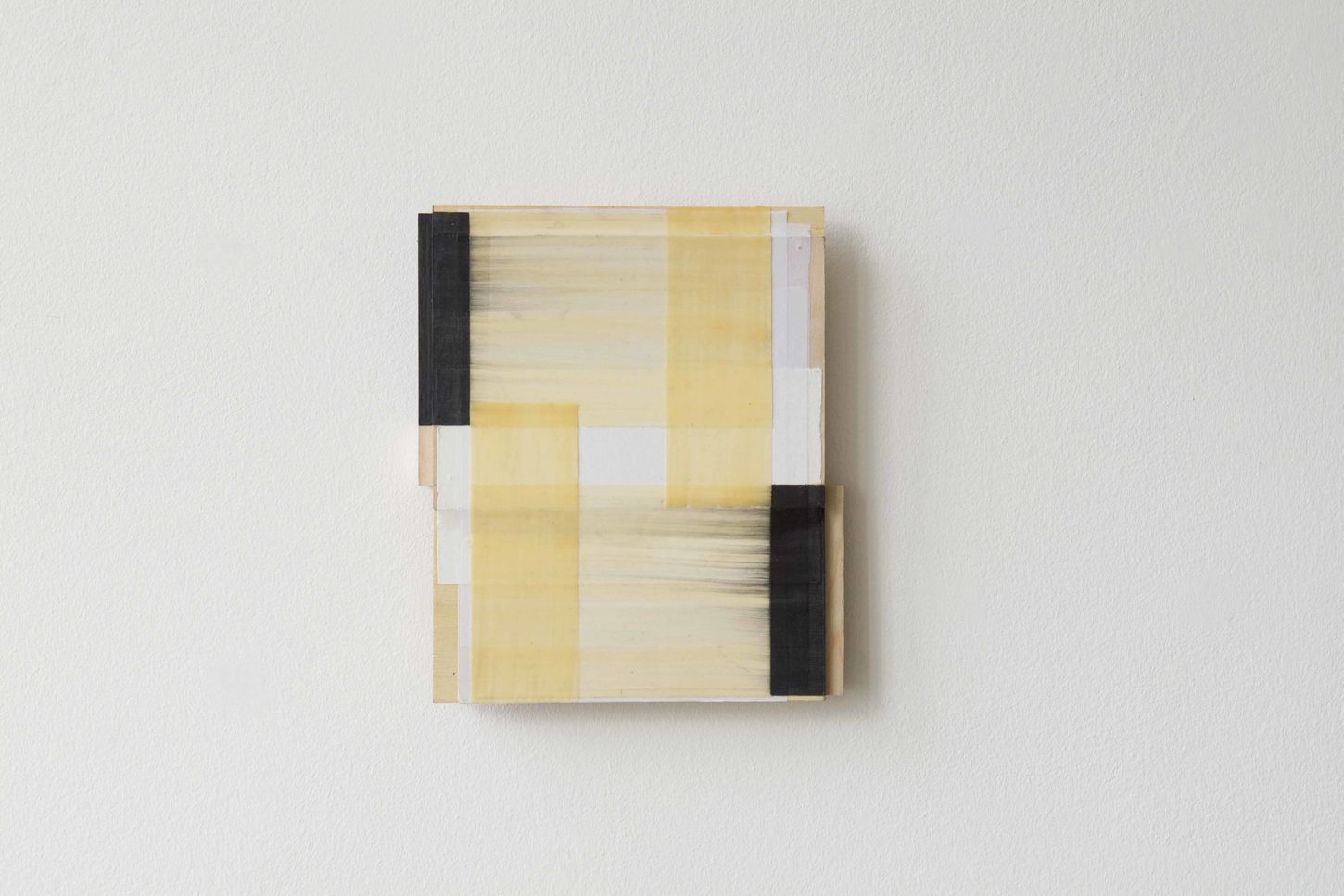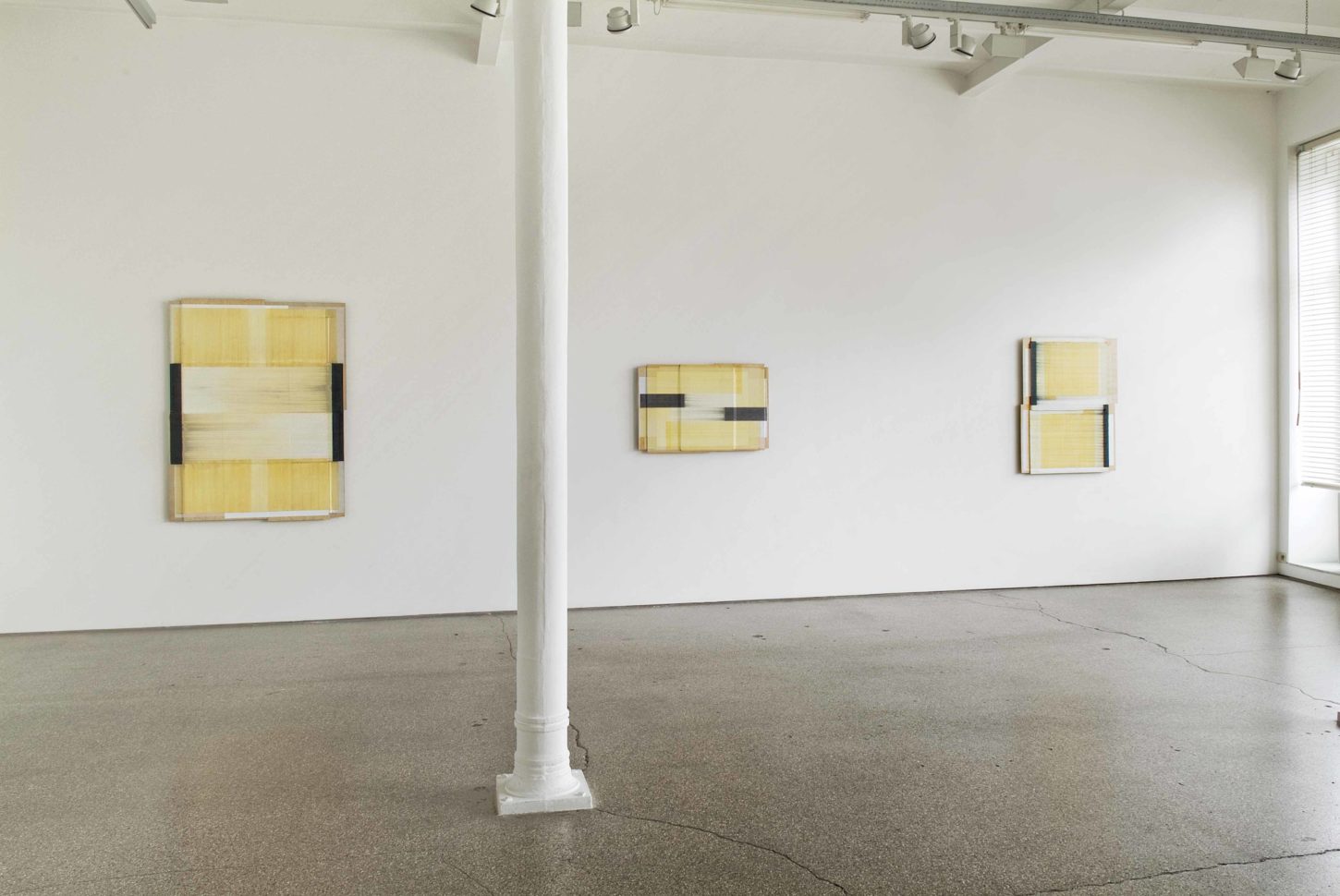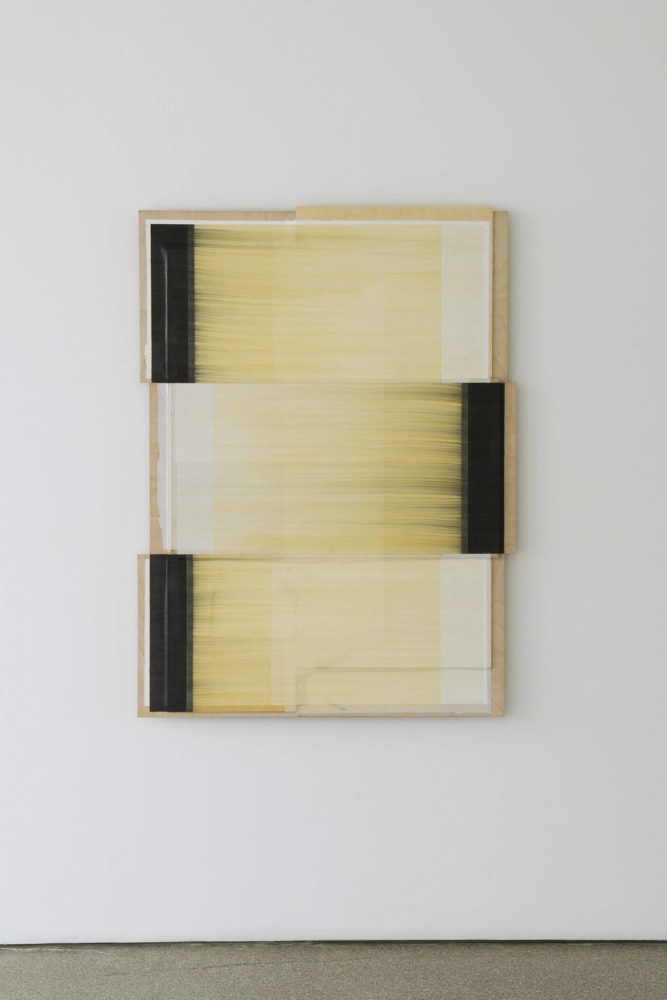Press Release
Melissa Kretschmer was born 1962 in Santa Monica, California. In 1988 she completed her degree at the Art Center College of Design, in Pasadena, and she started to focus her attention on the materials, their underlying structures and subtle changes when combined with each other.
This places Melissa Kretschmer’s work between painting and sculpting. Although colour is given a prominent role in her work, it is always deeply connected with the material that carries it. She does not use colour in any traditional way, but she makes an interplay of the colours that are inherent to the materials. Glass, for example, which she often uses, is allowed to show its blue tonality through its not-clean-cut thickness.
Melissa Kretschmer does not see herself as a colourist, but she brings textures together while making use of transparency, translucency, dullness, and liquidity… thus involving what ultimately proves to be central to her work: ‘How matter reveals as much about light as light reveals about matter … How the two reveal each other’s continual states of change.’
The artist mainly uses plywood, paper, graphite and beeswax. She assembles these different materials by stacking them – layers of different materials – with each element partly covering the other. This permits each element to keep its own quality while still being linked or contrasted with the other in a unique ‘geometric structure’.
The use of a geometric structure allows Melissa Kretschmer to show the changing qualities of the materials and their unpredictability. What may look like precision at first sight, isn’t really. There are mishaps, tears and lacerations from removing tape, beeswax stains, silicone traces on the paper. When talking about her work, Melissa Kretschmer prefers to use the term ‘accuracy’: ’Accuracy is about the rightness of the whole entity rather than the fit of its individual parts. While accuracy does not preclude imperfection, precision does and often at the loss of a sense of the whole.’

